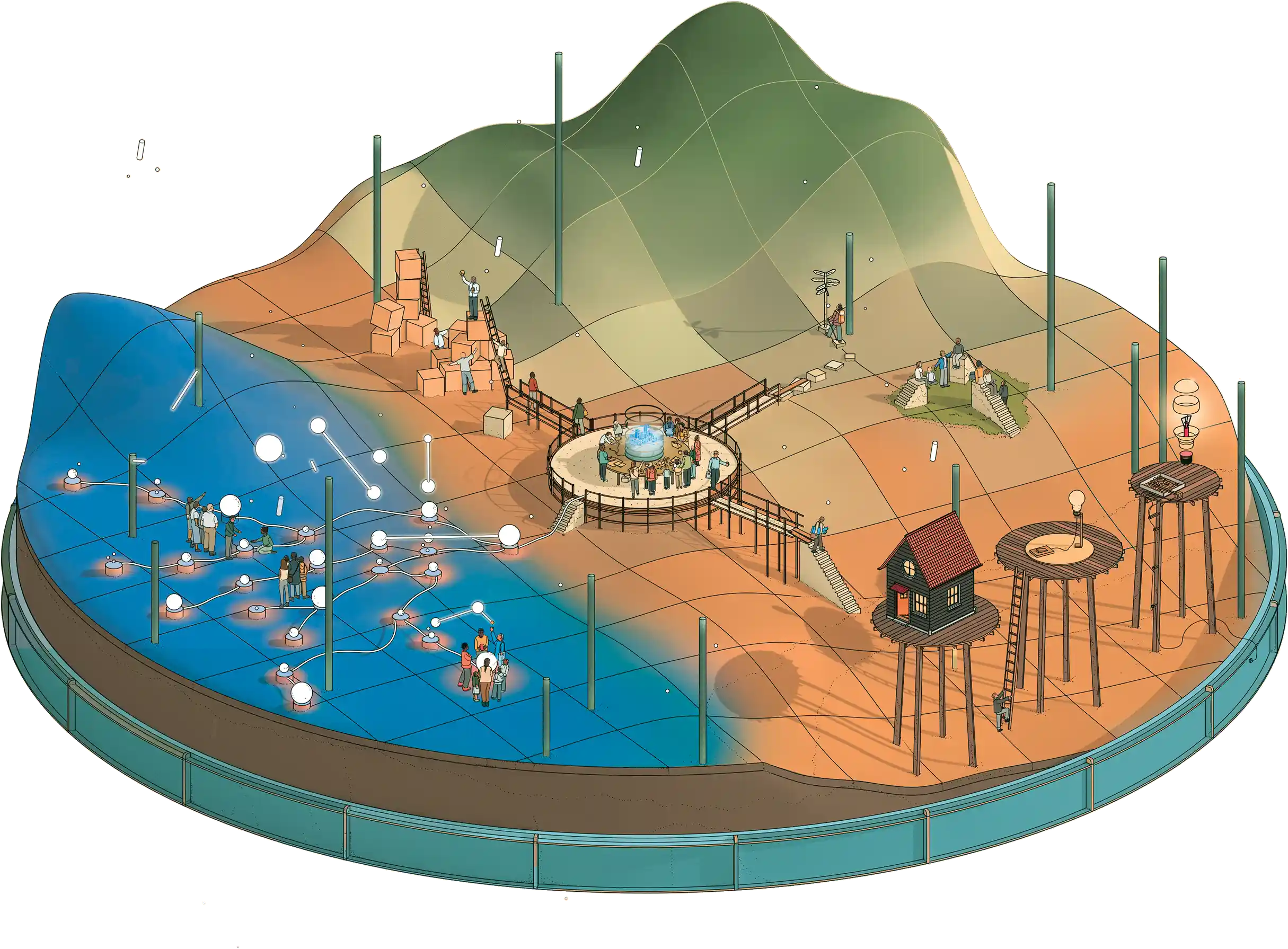Emulating intuitive scientific discovery

Challenge: Children resemble professional scientists when they learn about the world around them—they make predictions, construct hypotheses, revise their beliefs in light of evidence, devise and enact experiments, and consolidate their knowledge into simpler and more general theories. A profound idea that has emerged from cognitive science suggests that perhaps this resemblance is more than skin-deep. Perhaps the same general faculties which power the formal scientific process are present in children from a very young age and allow them to make sense of the world.
How can we develop machines that engage in this kind of intuitive scientific discovery?
One limitation of these approaches is that by remaining in purely simulated worlds, they fail to capture our human ability, adult or child, to discover and use models and theories at different levels of abstraction. Take the humble light switch as an example. At one level of abstraction, a light switch is a simple causal model—turning on the switch causes the light to turn on. At another level, a light switch is an electric device supported by hidden circuitry. At another level still, a light switch is a three dimensional geometric object that must be manipulated physically. Humans entertain all these forms of knowledge in their minds simultaneously, realize when they have gaps in their understanding, and know when and how to use the correct abstraction to solve a task at hand.
Project: Basis is engaging in a multi-pronged project to develop a system that emulates the intuitive scientific process to discover multi-level causal models. The system will both observe and interact with phenomena in the world (real or simulated) in order to build abstract models of it.
Develop a modeling language that can represent phenomena at multiple levels of abstraction. Before we can discover models that span multiple levels of abstraction, we need a way to represent them. This representation should allow information to pass between different levels. For example, if we tell the system the light switch is off, it should revise its expectations of what it will see or feel with its low-level sensors.
Develop a system that discovers video game level code from data. Modern video games and physical simulators such as Mujoco and Unity are able to simulate rigid-body physics, graphics, and the kinds of logical relationships needed to represent everyday mechanisms at a medium-level of abstraction, even if they do not capture lower-level phenomena like the flow of electrons through circuits. This task will take as given a simulator’s ability to model graphics, physics, motion control, etc., but within the simulation will aim to discover models of each particular device. These models will describe the geometric, physical, logical, and causal behavior of each device, capturing the complex structured latent state that evolves over time.
Basis leads: Zenna Tavares
Current collaborators: Joshua Tenenbaum, Kevin Ellis, Ria Das, Armando Solar-Lezama